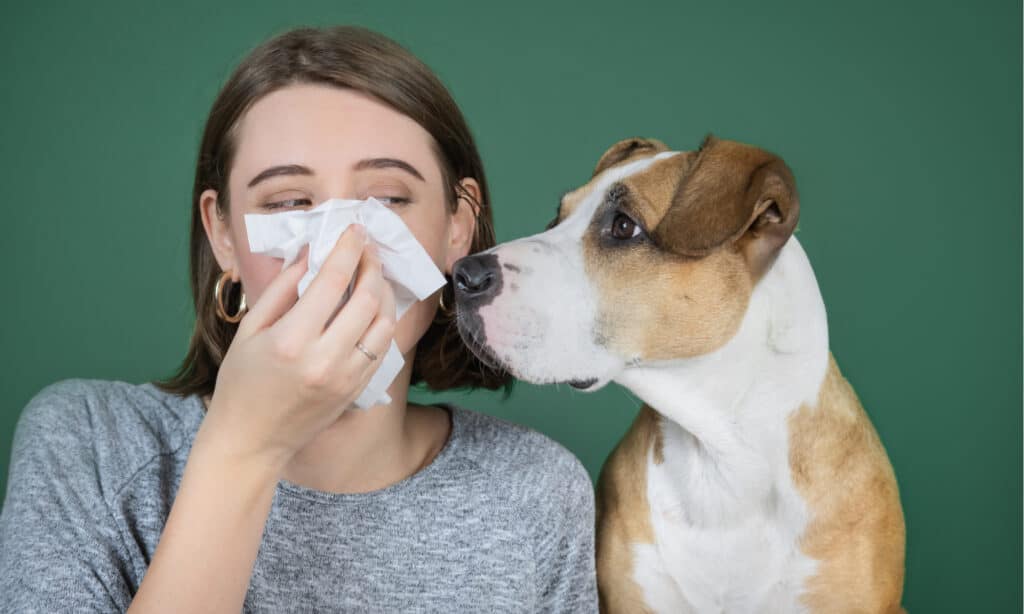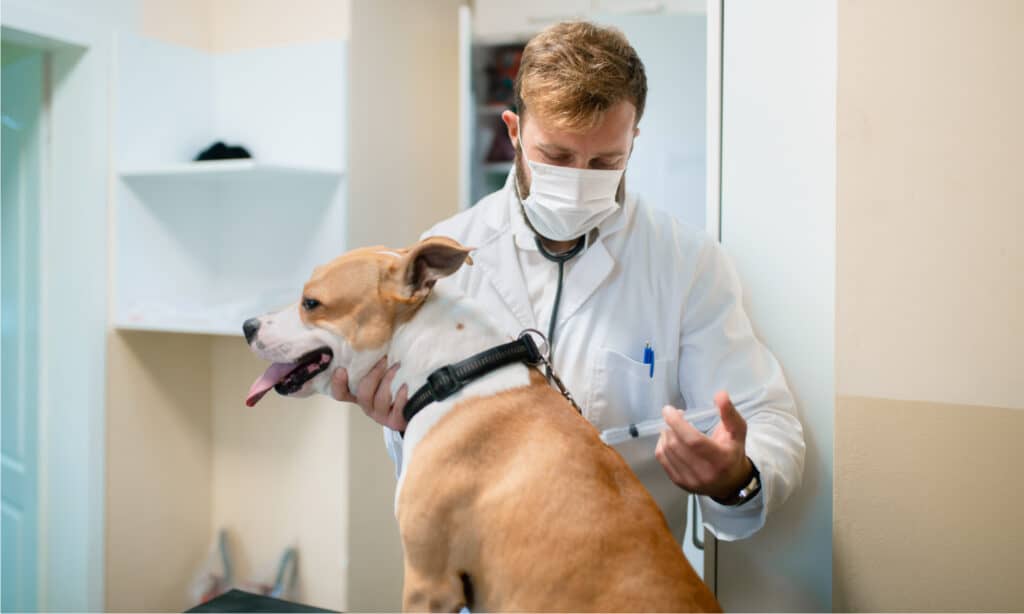Dogs’ eyes are similar to human ones in many different ways. And just like ours, they will become red if they’re suffering from any sort of eye irritation or infection.
Red eyes in dogs can be a concern for their owners—especially since it can be caused by wide variety of issues. Read on to learn more about why your dog’s eyes are red and what can be done to help.
Why Do Dogs Have Red Eyes?
Sometimes a dog’s eyes can turn red if they are irritated or are suffering from some sort of infection. If there is noticeable redness in your dog’s eyes, it could be due to irritation or inflammation that is occurring.
Allergies
Allergies are one of the most common reasons why dogs’ eyes turn red. Many people are unaware that dogs can suffer from allergies just like we do.
When humans get allergy symptoms, our eyes may water, and our noses become stuffy. When allergy season is in full swing, your dog can also get red, watery eyes and become very uncomfortable.
The most common allergies for dogs and for humans include things like pollen. However, it may not always be that it’s something in the air that’s causing your pup to tear up.
It could be an ingredient in your dog’s food that they’re allergic to. If you’re unsure what the source of your dog’s allergies is, it’s always best to make an appointment to see the vet so that the root cause of the allergies can be determined.
That way, if it’s something in the food that’s causing it, you can switch to another brand that doesn’t have the allergy-causing ingredient in it.
If that was the source, then your dog’s red eyes should clear up shortly thereafter.

©Aleksey Boyko/Shutterstock.com
Eye injury
The causes of red eyes can range from things that are minor issues, to very serious ones. One of the other potential causes of red eyes includes eye injury.
Your dog can have something like a piece of fur or grass stuck in its eye. This could be irritating the surface tissues and causing them to become inflamed.
It could also have a cut or abrasion on its eye that may be hard for you to detect. This can cause a lot of pain and discomfort for your dog, so be sure to get them to the vet to inspect the eye and get it the care that it needs.
Conjunctivitis
Conjunctivitis is known more commonly as “pink eye”. Yes, dogs can get this condition as well and it is just as uncomfortable for them.
This condition causes redness and itchiness and will generally affect one eye at a time. So if you notice that only one of your dog’s eyes is red, this could be a potential cause.
Pink eye can be caused by environmental irritants, viruses, or bacteria. Since this condition is not easy to diagnose by yourself, you’ll need to see a professional so that they can determine if this is what your dog is suffering from.
Dry eyes
Your dog could be suffering from a condition of chronically dry eyes. This condition is also called keratoconjunctivitis sicca (KCS) and is caused when there is a deficiency in the moist film of tears in your dog’s eyes.
If this film becomes too thin, it can cause your dog’s eyes to dry out and become inflamed. One of the most common causes of this disease is an immune-mediated response which causes the tear gland to stop functioning properly.
There are other conditions that could cause dry eyes in dogs too, like diabetes. This is why it is important for your dog to get regular checkups at the vet.
How To Treat Red Eyes In Dogs
If your dog has red eyes, never start a form of treatment at home without first consulting your veterinarian.
This is so that they can tell you the exact cause of your dog’s red eyes so that you aren’t treating it for something that it isn’t dealing with.
Since red eyes can be caused by a whole host of issues, it’s best to have a quick and easy examination done so that the root cause can be determined and the proper treatment can begin.
With that being said, some common treatments for eye-health issues in dogs include antibacterial, medicinal, or anti-inflammatory eye drops or ointments.
The vet with is able to walk you through step-by-step how to properly administer the treatment at home. Any attempts that you make to treat your dog without a proper diagnosis could lead to more severe symptoms.
Topical medications
Topical medications like ointments and drops may be given to you by your vet. These are usually applied up to three times a day for a week or two until you notice that the redness in your dog’s eyes has healed.
Some topical medications include steroids, antibiotics, pain relievers, dilators, and artificial tears.
Oral medications
If your dog’s red eyes are due to infection or trauma, oral antibiotics may be prescribed by your vet. They may also administer anti-inflammatories to help reduce the pain your dog may be in.
If the cause of the redness is due to an underlying disease, your vet will prescribe the proper medication that will help treat the disease.

©StrDr stock/Shutterstock.com
Surgery
Sometimes, depending on how severe the cause of your dog’s red eyes is, the treatment may require surgery. If a condition called cherry-eye is diagnosed, the veterinarian may first try to manually reset the gland using medications.
If this condition persists, then surgery may be needed to permanently repair the damaged tissue. In some cases, red eyes in dogs may be caused by an untreatable problem.
Unfortunately, this is one of the most severe cases, as it will require surgical removal of the eye. If this surgical procedure is required, the dog does not experience any adverse side effects, other than the loss of a degree of depth perception.
Recovery From Red Eyes In Dogs
After your dog’s treatment, the correct application of eye drops or ointment may need to be applied in order to prevent infection or pain.
Because of this, your vet may require that your dog wears an Elizabethan (cone or e-collar) in order to prevent it from scratching or rubbing at its eyes.
There will also likely be follow-up appointments for your dog in order to see how the healing process is going and to make sure that your dog is back on track to full health. This may involve weekly eye exams to determine if the treatment is working as it should.
The sooner you get your dog’s eyes checked to determine the cause of the redness, the better the outcome usually is when it comes to their recovery.
The photo featured at the top of this post is © Alexandr Jitarev/Shutterstock.com
Ready to discover the top 10 cutest dog breeds in the entire world?
How about the fastest dogs, the largest dogs and those that are -- quite frankly -- just the kindest dogs on the planet? Each day, AZ Animals sends out lists just like this to our thousands of email subscribers. And the best part? It's FREE. Join today by entering your email below.
Thank you for reading! Have some feedback for us? Contact the AZ Animals editorial team.







